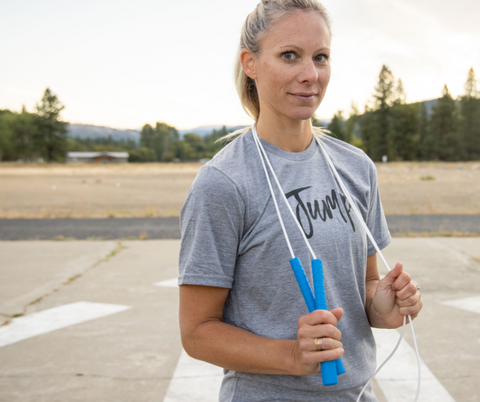Mastering Double Unders: The Right Technique
Nov 01, 2023Dan Cox

You have a jump rope for double unders and now you're ready to practice. It is important to keep in mind that the right jumping form for double unders is not terribly different from a basic bounce or single under. However, we see people struggle with double unders because they overcompensate for poor jump rope control by trying to jump higher. This leads to a few common mistakes in jump form and landing we will address in this article.
The first thing to think about when jumping for double unders is not how high your feet go above the ground but instead how high your head goes. The vertical distance of your body is what provides the time you will need to complete two turns of the jump rope. In other words, simply tucking your legs without lifting your entire body upward will not give you the “hang time” you need.
Typically, beginners will need a bit more hang time than advanced jump ropers. Once you’ve mastered rope speed and control, you won’t need to jump very high at all to complete double unders. Your turning speed and jump height work inversely to complete a double under. As your jump height increases, your speed must decrease, and as your jump height decreases, your rope turning speed must increase.
Two common mistakes we see in jumping form are piking:

and butt kicks.

To compensate for a shallow jump, jumpers attempt to raise their feet in order to get the rope under a second time. This creates three problems:
It is important to keep in mind how you contact the ground when attempting double unders. Because you are jumping higher than usual, your body must absorb a greater impact when landing. Be sure to allow a soft bend in your knees as you land. Landing with stiff, straight legs will prevent you from properly absorbing impact and can lead to injury.
Another key is to land on the balls of your feet. This helps you be ready to jump back up for the next single bounce or double under. We would be remiss to not mention the value of a high-quality jump rope mat for double unders. The added strain on your feet, ankles, and knees from repetitive jumps can be greatly reduced by using a jump rope mat. As an added bonus, it will ensure your jump rope lasts a very long time.
More from our Double Under Mastery Series:
We're all about equipping and encouraging people to take on big challenges, because we know the process of doing hard things helps us grow in character and capacity.
Frequently bought together
You may also like
0 Comments
There are no comments for this article. Be the first one to leave a message!